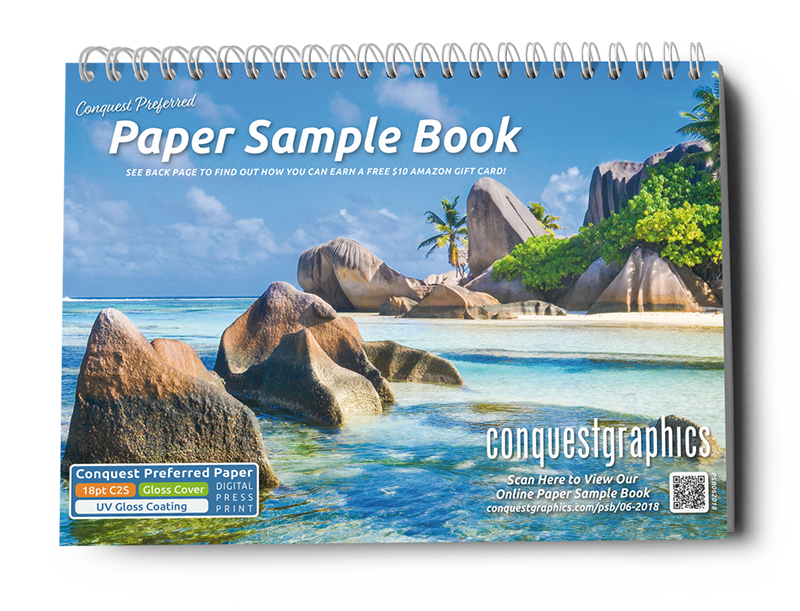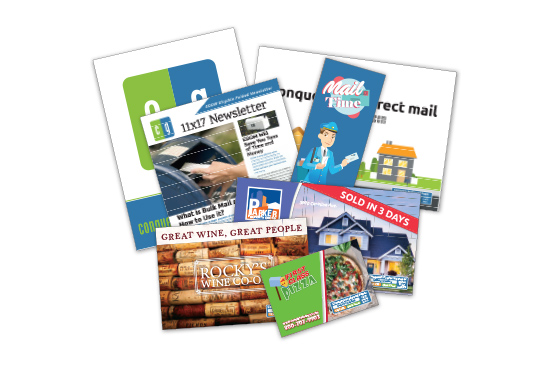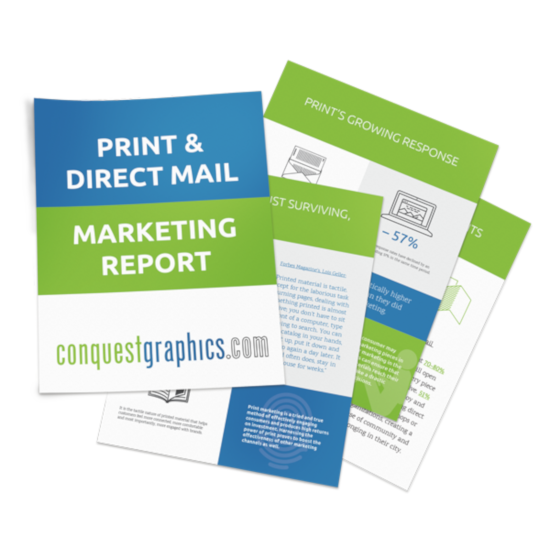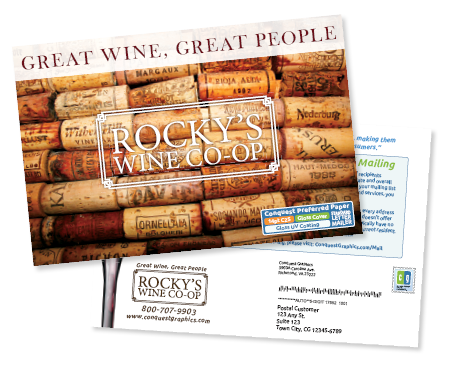 While there are more ways to use catalogs in marketing than a person can count, there are only a few catalog marketing ideas that are genuinely easy. Typically composing a catalog takes long hours of hard work compiling information and media about your brand or its products and services that has to then be rigorously edited to be presented in an aesthetically pleasing, concise format.
While there are more ways to use catalogs in marketing than a person can count, there are only a few catalog marketing ideas that are genuinely easy. Typically composing a catalog takes long hours of hard work compiling information and media about your brand or its products and services that has to then be rigorously edited to be presented in an aesthetically pleasing, concise format.
Indeed, there aren’t really any methods that can fully avoid all the painful parts of the catalog design and creation process, but there are some catalog marketing ideas that are generally foolproof and require less demanding preparation processes.
We’ve narrowed this list down to 8 different catalog marketing ideas that each present a unique method of presenting your brand, your business or your products and services to prospects and customers in unique ways.
1. Educational Catalog
Educational catalogs are highly descriptive collections of useful information that provide a collection of media and content your intended audiences are genuinely interested in and can maybe even use as a reference for years to come.
For example, a car salesman could publish an annual review of the various new models to come out over the past year from a purely objective standpoint. Writing from this kind of point-of-view does a number of things for you, your brand and your audiences.
 First, publishing editorial style content contributes to the greater body of literature and media shared by the community of people passionate about what your business does. It does this by giving them something they can delight in reading or use as a source for generating their own content. By contributing something like this to audiences that are passionate about what you do, you generate a sort of buzz among colleagues that spreads familiarity with your brand while also allowing your brand recognition to begin gaining its own momentum.
First, publishing editorial style content contributes to the greater body of literature and media shared by the community of people passionate about what your business does. It does this by giving them something they can delight in reading or use as a source for generating their own content. By contributing something like this to audiences that are passionate about what you do, you generate a sort of buzz among colleagues that spreads familiarity with your brand while also allowing your brand recognition to begin gaining its own momentum.
While this type of marketing doesn’t do much “direct marketing,” it includes your brand alongside content that your audiences will find genuinely interesting and helpful, and that does so much more in marketing your brand than what may be immediately obvious.
Educational catalogs also provide the perfect platform from which you can inform your prospects and customers of the latest things your brand has developed to improve its products or services. These kinds of announcements shouldn’t sound too “marketing” or “sales” focused. Rather, this type of content provides information that furthers the community surrounding your industry.
2. Marketing Catalogs
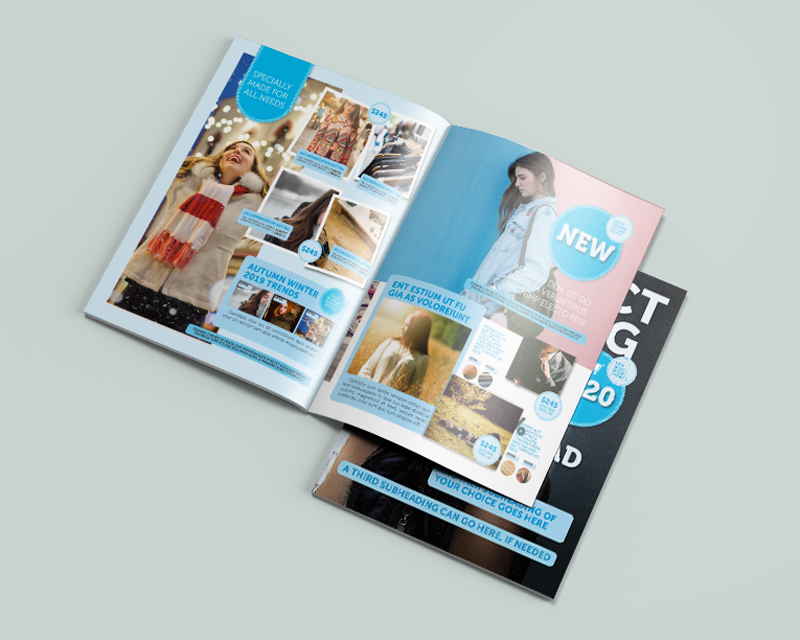 Almost the polar opposite of the educational catalog is the marketing catalog, a collection of media and text that is solely dedicated to direct marketing.
Almost the polar opposite of the educational catalog is the marketing catalog, a collection of media and text that is solely dedicated to direct marketing.
So how does direct marketing style content differ from regular, editorial style content? The difference lies in the intended purpose. If the intended purpose of your writing is to sell a product or service to members of your audience, then it’s marketing material.
An example of this would be the generic catalog; the kind like you receive from your favorite brands every now and then in the mail. These kinds of catalogs provide a unified place for all of your business’ products and services to be listed alongside one another. Department stores love to send these out right at the beginning of the holiday season each year in an effort to drum up the hype around the products and offerings they have for you to give as gifts to friends and family.
The ultimate purpose for this type of catalog campaign is to make more sales, often providing a direct means of purchasing a brand’s goods or services through return mail or a toll-free number.
Making a marketing catalog is as simple as listing all of your business’ products and services, throwing in some sales-oriented messaging and a few pictures of your products, and voila! You have yourself a top-notch marketing catalog that can be used to make sales for as long as you need it to.
3. Commercial Catalogs
A well-made commercial catalog is very simple, as it often includes a slimmed down or targeted version of your full marketing catalog with less filler material and more cold, hard facts about your products and service offerings.
 This type of catalog is geared towards your salespeople and hot prospects, as they pretty much provide a concise, easy to navigate menu from which a customer may easily place an order. While they are usually kept within an organization as a tool to be used by salespeople, they can also be distributed outside of your business to provide an easy source of directions for customers on how to place orders with your business.
This type of catalog is geared towards your salespeople and hot prospects, as they pretty much provide a concise, easy to navigate menu from which a customer may easily place an order. While they are usually kept within an organization as a tool to be used by salespeople, they can also be distributed outside of your business to provide an easy source of directions for customers on how to place orders with your business.
While they are different from sell sheets in a few small ways, commercial catalogs are useful in the field as your salespeople are visiting customers and prospects in person. The catalog format allows the content to go beyond what would normally be possible in a sell sheet, and it also allows for your brand to include more descriptive information and possibly even editorial content that characterizes your brand and gives readers some context by which to judge whether they want your product or not.
The commercial catalog is one of the easiest varieties of catalogs to make since the design doesn’t need to be as creative or meticulous as it has to be for other varieties of catalogs. This is primarily because this type of catalog isn’t meant to be customer-facing as often as other types of catalogs are.
By leaving the design relatively simple and plain, you give customers that do get their hands on a copy the idea that they have exclusive access to something that’s usually only for salespeople. This kind of effect can sometimes encourage buyers since they feel they’re getting a better deal by ordering from this version of your catalog.
4. Event or Location-Specific Catalogs
While most events or locations don’t call for catalogs to be produced, there are certain events like trade shows and interest group-related events that do pose the perfect opportunity to market your brand or its products and services to audiences at a singular location or event.
Location-based catalogs are perfect for business’ that rely on their location as a tourism destination, such as a tourism bureau, travel agency or amusement park. While these types of locations also order brochures and rack cards aplenty, they can benefit immensely from having catalogs as well to provide visitors and interested prospects with a more in-depth taste of your brand and its story. The pages can easily be filled with images, stories and letters from managers or owners. They can also be filled with maps or images and text that describes the general experience a guest can expect to have while visiting certain places in the location-based attraction.
For event-specific catalogs, there are a number of ways a brand can tie their branding into the events branding, assuming the two align somewhat nicely. While there will always be a slight sense of awkwardness from mixing two brands, this is essential to tie in the event with your brand so passersby and interested prospects can retain positive associations with your brand when they remember their experience visiting the given event.
 Since event-based catalogs present a sort of temporary element that’s unlike most other catalogs, temporary types of messaging and offers can be included as well. For example, you could offer special pricing to anyone who attended the event. In this case, you could list the special pricing for your products and services in this catalog so audiences will feel like they should purchase something from you since it’s so rare you ever give discounts otherwise.
Since event-based catalogs present a sort of temporary element that’s unlike most other catalogs, temporary types of messaging and offers can be included as well. For example, you could offer special pricing to anyone who attended the event. In this case, you could list the special pricing for your products and services in this catalog so audiences will feel like they should purchase something from you since it’s so rare you ever give discounts otherwise.
The combination of geographic or time-based exclusivity and urgency that goes along with those things makes event or location-specific catalogs a very potent tool for trade shows and more. The temporal nature of these kinds of publications means you can spend less time on design and more time focusing on the key content you want to include to entice more sales.
5. Branding Catalogs
These types of catalogs are the Narcissus of print. They’re self-obsessed and they spend the entirety of their format elaborating upon the nuances of your brand in all of its glory. This type of catalog typically provides the self-descriptive branding opportunity most marketing professionals would die for.
The types of content presented in a branding catalog vary depending upon your business’ industry, but they generally center around business and company culture types of topics since the goal of them is to convince the reader that your company is a great company, regardless of what you sell.
There can be a few notes about items or services you sell throughout, but you want to stick to company culture oriented topics in order to prevent the publication from seeming like it’s just the brand trying to sneakily sell the reader something.
Branding catalogs are a marketing teams’ field day, as they get to have full control over the way in which your business is presented across a collection of content, either written or visual that potential clients will be interested in reading. Because of the ease with which a marketer could throw this type of catalog together, we think it’s one of the easiest catalog marketing ideas on this list.
6. Nonprofit Catalogs
While this type of marketing idea is specific to nonprofits, we included it as an easy type of catalog to produce due to the fact that it builds off of a nonprofits existing branding and messaging in a way that allows its creation to be shorter than a typical “starting-from-scratch” catalog building process.
These types of catalogs don’t focus on the brand or business much, and instead choose to focus on the cause which they are advocating for. A nonprofit will come across as a humble advocate for the cause if this type of catalog marketing is done correctly.
Since the goal of such a marketing material would be to encourage members of the public to make a donation, it’s important that the language and images included appeal to a universal audience. This can seem daunting at first, but it’s actually kind of freeing since it allows your brand to open up and speak plain English in a way that many commercial ventures aren’t able to.
 It’s also important to keep this variety of catalog from looking like you spent too much money on it, as it may come across to donors as if you’re disproportionately allocating their donations to marketing your own brand even more.
It’s also important to keep this variety of catalog from looking like you spent too much money on it, as it may come across to donors as if you’re disproportionately allocating their donations to marketing your own brand even more.
In the case of nonprofits that advocate for informing or educating the public, sometimes the catalog is the ultimate goal of all the fundraising efforts. In cases such as these, it’s important to follow the advice above underneath the educational catalog since the catalog may be for a nonprofit, but it’s also important to make the product your donors are putting all their money into at least look nice.
While nonprofit catalogs can take the form of any other type of catalog mentioned in this blog, it’s important to recognize the public expectations for such catalogs so as to increase donations and avoid pushing any donors away due to concerns over spending on marketing.
7. B2B Catalogs
B2B or business to business marketing is an important source (if not sole source) of income for a lot of businesses out there. Businesses that provide products and services to other businesses need quality marketing, too, so it’s important that these types of publications also showcase quality designs and well-thought-out copy.
Since the goal of B2B marketing is to sell your product or service to another business, you have to be thinking with the mind of your target business’ buyers. The people responsible for sourcing or buying in your target organization will almost universally be very cost-conscious, logical people who are looking for a set of key details that they want to get from your business quickly, or else they’ll just pass and move on to the next potential vendor.
For that reason, it’s important that you make the various details a buyer in your industry is most influenced by about your product or service prominently displayed. In many industries, the buyer will also have to do a good amount of research about the products and services offered by a potential vendor, so this type of catalog is the perfect place to do that.
The effective B2B catalog is pretty much the Swiss army knife of catalogs, as it can be adapted to any selling scenario and it contains elements of each of the other types of catalog marketing ideas described above.
As long as your sure to keep your catalog concise and clean, your readers will be able to extract the key pieces of information they’re looking for quickly and efficiently, and hopefully this will lead them to choose your business as a vendor in the future when the time finally comes for that.
 8. Investor Report/Catalog
8. Investor Report/Catalog
Since many businesses, both public and private, nonprofit and for profit have to publish some sort of annual or quarterly report to their investors and stakeholders, why not at least make it look good. The investor report is a very effective use of a printed catalog product put to creative and good use.
While these types of publications may be more formal in nature, they also present an opportunity to polish up your existing brand in a way that presents its best sides to the people who hold significant shares in your business’ success.
A note about design
If you’re stuck with the design of your catalog, don’t worry! We have plenty of templates available online for catalogs of all shapes and sizes.
With these catalog marketing ideas in mind, you’ll be able to create the perfect catalog for your business’ needs that gives your customers and prospects all the right information.
